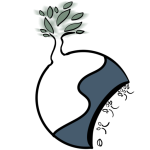This is also a summary by Zhu Xi. When we say “Qian Three Unbroken,” does it refer to those three solid lines? “Kun Six Broken” – are they indeed six divided segments? “Zhen Like an Upright Bowl” – doesn’t the Zhen trigram resemble a bowl placed upright, empty on top and solid at the bottom? “Gen Like an Overturned Bowl” is simply flipping the bowl over, as a metaphor. “Li Hollow at the Center” represents fire – if the center of a fire isn’t hollow, how could flames emerge? Hence, “Li Hollow at the Center.” “Kan Full at the Center” symbolizes water – see how it fills the middle? “Dui Open at the Top” – observe the Dui trigram: isn’t its top broken? All lakes and ponds embody Dui.
That’s why Dui is called the third daughter. Among bodily organs, it represents the mouth. Dui is the mouth, an opening. Today, Dui signifies joy – the character 悦 (yuè, “joy”) is literally Dui (兑) with a heart radical (忄). Dui itself embodies joy. “Misfortune stems from the mouth,” but so does happiness – singing, pop songs, don’t they all flow from the mouth? “Xun Broken Below” – the Xun trigram, wind. Observe how it’s a maternal trigram, the eldest sister, broken at the bottom.
All 64 hexagrams in your mind are simply combinations of these eight foundational trigrams. The 384 yao lines may seem complex, but fundamentally, there are only two: a single yin and a single yang. As the saying goes, “The Way is constituted by a single yin and a single yang.” Combine them, and you get Taiji – the Supreme Ultimate, represented by a single stroke, the One. Is this essentially clear?
Regarding odd and even numbers: yang yao (solid lines) and yin yao (broken lines) follow a convention unique to Chinese culture. Odd numbers (1, 3, 5, 7, 9) symbolize the male principle – doesn’t the male genitalia resemble the numeral 1? Even numbers represent the female principle. That’s the idea.
Now, how are these trigrams arranged? Pay attention: to interpret numerical hexagrams, we use the Prenatal Bagua arrangement for positioning. Here, Qian (Heaven) is numbered 1, Dui (Lake) is 2, Li (Fire) is 3, Zhen (Thunder) is 4, Xun (Wind) is 5, Kan (Water) is 6, Gen (Mountain) is 7, and Kun (Earth) is 8. Thus, Qian is 1, and its opposite Kun is 8. The sequence runs 1 through 8. In essence, the Bagua are numbered entities.
[Float-Menu id=”1″]

发表回复